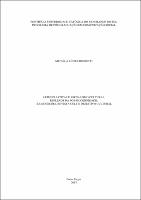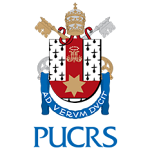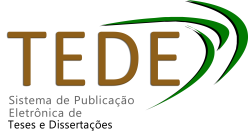| Share record |


|
Please use this identifier to cite or link to this item:
https://tede2.pucrs.br/tede2/handle/tede/6541Full metadata record
| DC Field | Value | Language |
|---|---|---|
| dc.creator | Rossetti, Micaela Lüdke | - |
| dc.creator.Lattes | http://buscatextual.cnpq.br/buscatextual/visualizacv.do?id=K4854429E6 | por |
| dc.contributor.advisor1 | Silva, Juremir Machado da | - |
| dc.contributor.advisor1Lattes | http://buscatextual.cnpq.br/buscatextual/visualizacv.do?id=K4782884U9 | por |
| dc.date.accessioned | 2016-03-18T13:16:29Z | - |
| dc.date.issued | 2016-01-08 | - |
| dc.identifier.uri | http://tede2.pucrs.br/tede2/handle/tede/6541 | - |
| dc.description.resumo | O jornalismo cultural brasileiro, dedicado à avaliação de ideias, valores e artes, encontra-se em momento inédito na sua história: o contexto pós-moderno proporciona a coexistência de variados canais de expressão, além de influenciar a prática jornalística e a criação de obras artísticas em diversas áreas. Dentre elas, as artes plásticas merecem atenção devido a sua capacidade de refletir o momento presente e atuar como motor de transformação social. Este trabalho identifica, através da técnica de análise de conteúdo (BARDIN, 2009), qual o tratamento que as artes plásticas recebem de três dos principais veículos de jornalismo cultural no Brasil: o suplemento cultural Ilustríssima, veiculado aos domingos pela Folha de São Paulo; a Revista Cult, publicada mensalmente pela Editora Bregantini; e o site Digestivo Cultural, criado e administrado diariamente por Julio Daio Borges. A pesquisa revela a presença e a ausência de características pós-modernas tanto na relação entre as artes plásticas e o jornalismo cultural quanto no exercício das duas práticas. Para embasar essa discussão, são utilizadas reflexões de Guy Debord, Jean-François Lyotard, Michel Maffesoli, Fredric Jameson, Zygmunt Bauman e Gilles Lipovetsky. O trabalho infere ainda comparações entre as naturezas, os regimes de produção e o conteúdo dos meios estudados, a fim de evidenciar as peculiaridades de cada dispositivo e, consequentemente, explorar a situação contemporânea do jornalismo cultural brasileiro. | por |
| dc.description.abstract | Brazilian cultural journalism, as committed to the evaluation of ideas, values and arts, finds itself in an unprecedented moment of its history: the postmodern context enables the coexistence of several channels of expression and also exerts influence over the journalistic practice and the creation of artistic works within several fields. Among them, plastic arts deserve special attention due to their capacity to reflect on the present moment and act as a motor for social changes. This paper aims to identify, by applying the technique of content analysis (BARDIN, 2009), the treatment received by plastic arts from three of the country’s leading vehicles of cultural journalism: the cultural supplement Ilustríssima, published on Sundays by Folha de São Paulo; Revista Cult, published monthly by Editora Bregantini; and the website Digestivo Cultural, created and updated daily by Julio Daio Borges. Our research reveals the presence or absence of postmodern characteristics in the relations between art and cultural journalism, as well as in the exercise of both practices. In order to support our arguments, we have resorted to the reflections of Guy Debord, Jean-François Lyotard, Michel Maffesoli, Fredric Jameson, Zygmunt Bauman and Gilles Lipovetsky. This essay further infers comparisons between the nature, production regime and content of the channels studied, with the purpose of evincing the peculiarities of each dispositive and, consequently, exploring the contemporary situation of Brazilian cultural journalism. | eng |
| dc.description.provenance | Submitted by Setor de Tratamento da Informação - BC/PUCRS ([email protected]) on 2016-03-18T13:16:29Z No. of bitstreams: 1 DIS_MICAELA_LUDKE_ROSSETTI_COMPLETO.pdf: 1804954 bytes, checksum: c1805d9b6991f45d1cfa47192bce091c (MD5) | eng |
| dc.description.provenance | Made available in DSpace on 2016-03-18T13:16:29Z (GMT). No. of bitstreams: 1 DIS_MICAELA_LUDKE_ROSSETTI_COMPLETO.pdf: 1804954 bytes, checksum: c1805d9b6991f45d1cfa47192bce091c (MD5) Previous issue date: 2016-01-08 | eng |
| dc.description.sponsorship | Conselho Nacional de Pesquisa e Desenvolvimento Científico e Tecnológico - CNPq | por |
| dc.format | application/pdf | * |
| dc.thumbnail.url | http://tede2.pucrs.br:80/tede2/retrieve/164299/DIS_MICAELA_LUDKE_ROSSETTI_COMPLETO.pdf.jpg | * |
| dc.language | por | por |
| dc.publisher | Pontifícia Universidade Católica do Rio Grande do Sul | por |
| dc.publisher.department | Faculdade de Comunicação Social | por |
| dc.publisher.country | Brasil | por |
| dc.publisher.initials | PUCRS | por |
| dc.publisher.program | Programa de Pós-Graduação em Comunicação Social | por |
| dc.rights | Acesso Aberto | por |
| dc.subject | JORNALISMO CULTURAL | por |
| dc.subject | ARTES PLÁSTICAS | por |
| dc.subject | PÓS-MODERNIDADE | por |
| dc.subject | COMUNICAÇÃO | por |
| dc.subject.cnpq | CIENCIAS SOCIAIS APLICADAS::COMUNICACAO | por |
| dc.title | Artes plásticas e jornalismo cultural, reflexos da pós-modernidade : Ilustríssima, Revista Cult e Digestivo Cultural | por |
| dc.type | Dissertação | por |
| Appears in Collections: | Programa de Pós-Graduação em Comunicação Social | |
Files in This Item:
| File | Description | Size | Format | |
|---|---|---|---|---|
| DIS_MICAELA_LUDKE_ROSSETTI_COMPLETO.pdf | 3.72 MB | Adobe PDF |  Download/Open Preview |
Items in DSpace are protected by copyright, with all rights reserved, unless otherwise indicated.




